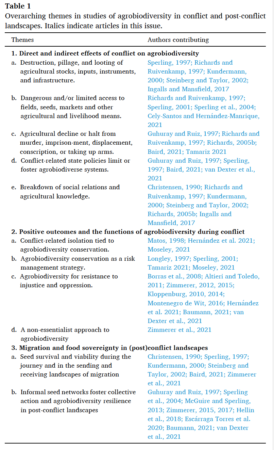The papers that compose this issue evidence how an integrative approach is not only analytically beneficial but also necessary for research supporting the sustainable resolution of conflict, the related conservation of agrobiodiversity and equitable human-environment relations.
Gabriel Tamariz and Megan Baumann have co-organized and co-edited a special issue of Geoforum on “Agrobiodiversity Change in Conflict and Post-Conflict Landscapes.” I’m hoping I won’t get into trouble for sharing this table which gives an idea of what’s in it.
